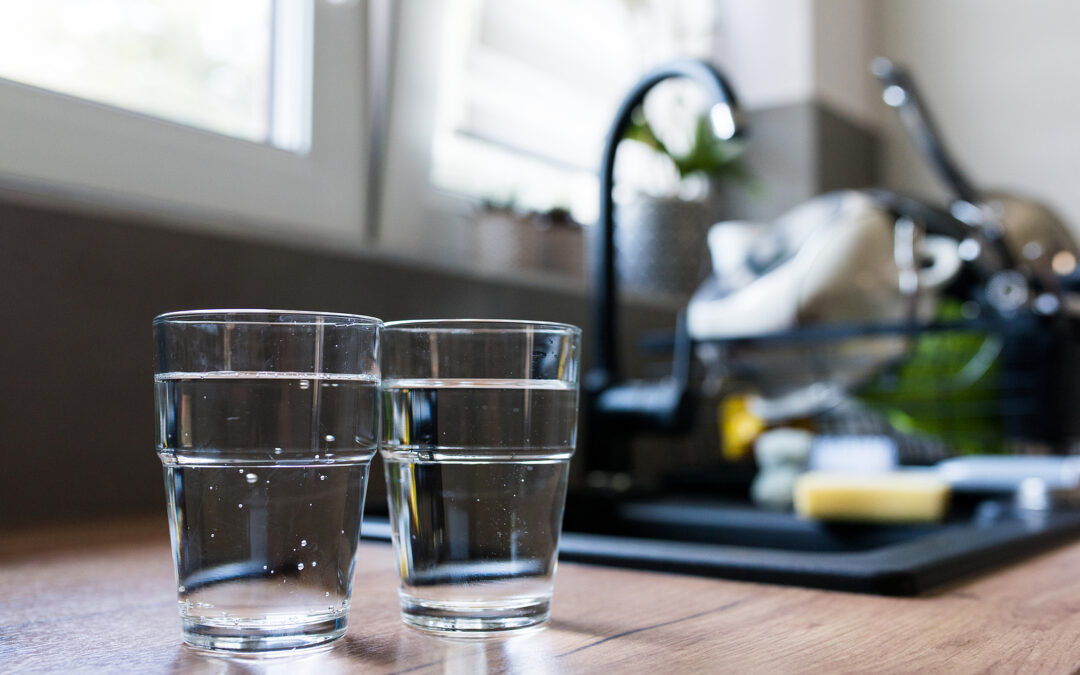When it comes to improving water quality at home, two popular solutions often come up: reverse osmosis (RO) systems and water softeners. Both have distinct purposes and offer unique benefits, but they aren’t interchangeable. While a reverse osmosis system focuses on removing contaminants for clean drinking water, a water softener is designed to reduce water hardness, protecting plumbing and appliances from mineral buildup. For homeowners, understanding the difference is key to selecting the right option based on specific water needs.
In this post, we’ll explore the deeper details of reverse osmosis vs water softener systems. Plus, the essentials of each system, their primary functions, and help you decide when to use a reverse osmosis system, a water softener, or even both to achieve the best water quality for your home.
1. What Is Reverse Osmosis (RO)?
Reverse osmosis is a water filtration process that removes contaminants by forcing water through a semi-permeable membrane. This membrane allows water molecules to pass through but blocks larger particles, including dissolved salts, bacteria, heavy metals, and other impurities. An RO system typically has multiple filtration stages, starting with pre-filters that remove sediment and chlorine, which could otherwise damage the membrane. The result is highly purified water that is ideal for drinking and cooking, with a noticeable improvement in taste and clarity.
Key Benefits
- Removes Contaminants: RO systems can eliminate up to 99% of common contaminants, including lead, fluoride, arsenic, and chlorine, making it a great choice for households with concerns about water quality.
- Improves Taste and Odor: By filtering out impurities, RO water often tastes fresher and cleaner, with no lingering chemical or metallic aftertastes.
- Ideal for Drinking and Cooking: RO provides high-quality, contaminant-free water that’s especially beneficial for drinking, cooking, and preparing baby formula.
Things to Consider:
While RO is highly effective, it does have some downsides to consider:
- Slow Filtration Process: The process can be slow, as water is filtered in stages, and most systems produce purified water at a slower rate than a typical tap.
- Water Waste: RO systems discard some water as a byproduct of filtration, which can add up in areas where water conservation is a priority.
- Whole House RO Systems Can Get Expensive: RO systems that filter water for the entire house are often very expensive, which is why most people opt for using it only for cooking and drinking.
2. What Is a Water Softener?
A water softener is a system designed specifically to treat hard water by removing minerals like calcium and magnesium, which are responsible for water hardness. Water softeners typically use an ion exchange process – hard water enters the softener tank, where calcium and magnesium ions are exchanged for sodium or potassium ions. This exchange neutralizes the hardness, leaving the water “soft” as it exits the tank.
Key Benefits
- Prevents Limescale Buildup: Softened water prevents mineral deposits from forming in pipes, faucets, and appliances, helping them function more efficiently and last longer.
- Improves Soap and Detergent Effectiveness: Soft water allows soaps and detergents to lather more easily, making laundry softer, dishes cleaner, and showers more refreshing.
- Protects Skin and Hair: Hard water can leave skin feeling dry and hair dull. Softened water, by contrast, is gentler and less drying.
Drawbacks
While water softeners provide significant advantages for hard water, they have a few limitations:
- Does Not Remove Contaminants: Unlike RO systems, water softeners do not filter out contaminants like heavy metals, chemicals, or bacteria. Their primary purpose is mineral reduction, not purification.
- Adds Sodium to Water: The ion exchange process replaces hardness minerals with sodium ions. While the added sodium level is typically low, individuals on low-sodium diets may need to consider alternatives or install an additional filter for drinking water.
- Regular Maintenance Required: Water softeners need periodic salt refills and regular maintenance to function effectively, including resin bed cleaning and occasional professional servicing.
When to Use a Reverse Osmosis vs Water Softener System
Reverse osmosis systems are best suited for those seeking purified drinking water. They’re highly effective at removing contaminants such as heavy metals, chemicals, and bacteria, making them ideal for areas with questionable water quality or specific health concerns. If your goal is clean, safe water for drinking, cooking, and other sensitive uses, an RO system is a great choice. RO is especially beneficial for households with young children, individuals with compromised immune systems, or those looking to enhance the taste and odor of their water.
Water softeners, on the other hand, are ideal for addressing water hardness issues. If you live in a region with hard water, a water softener can protect your plumbing, appliances, and even personal care products by reducing mineral buildup. Softened water prevents limescale, improves soap efficiency, and is gentler on skin and hair, making it perfect for tasks like laundry, cleaning, and bathing.
Can You Use Both a Reverse Osmosis System and a Water Softener Together?
Yes, you can use both a reverse osmosis system and a water softener together, and in fact, they complement each other very well. Installing a water softener at your home’s water entry point helps reduce hardness. Meanwhile, adding a reverse osmosis system under the kitchen sink or at another point of use can ensure that the water you drink and cook with is free from a broad range of contaminants. This combination provides softened water for household needs and purified water for consumption, giving you the best of both worlds. While this setup does require an upfront investment and regular maintenance, it offers a comprehensive approach to achieving the highest quality water throughout your home.
Conclusion
Choosing between a reverse osmosis system vs water softener depends largely on your specific water quality needs. If you’re focused on obtaining purified water free of contaminants for drinking and cooking, a reverse osmosis system is the best choice. For households dealing with hard water issues that cause limescale buildup, a water softener will help protect plumbing and appliances, making cleaning easier and improving skin and hair health. Many homeowners find that using both systems together offers the greatest benefits, providing softened water for the whole home and purified water for drinking.
To make the best decision, consider your water’s current quality and what improvements are most important to you. If you’re ready to have cleaner water in your home, contact us today to schedule a consultation and discover the best water treatment solutions for your home!


